Menu
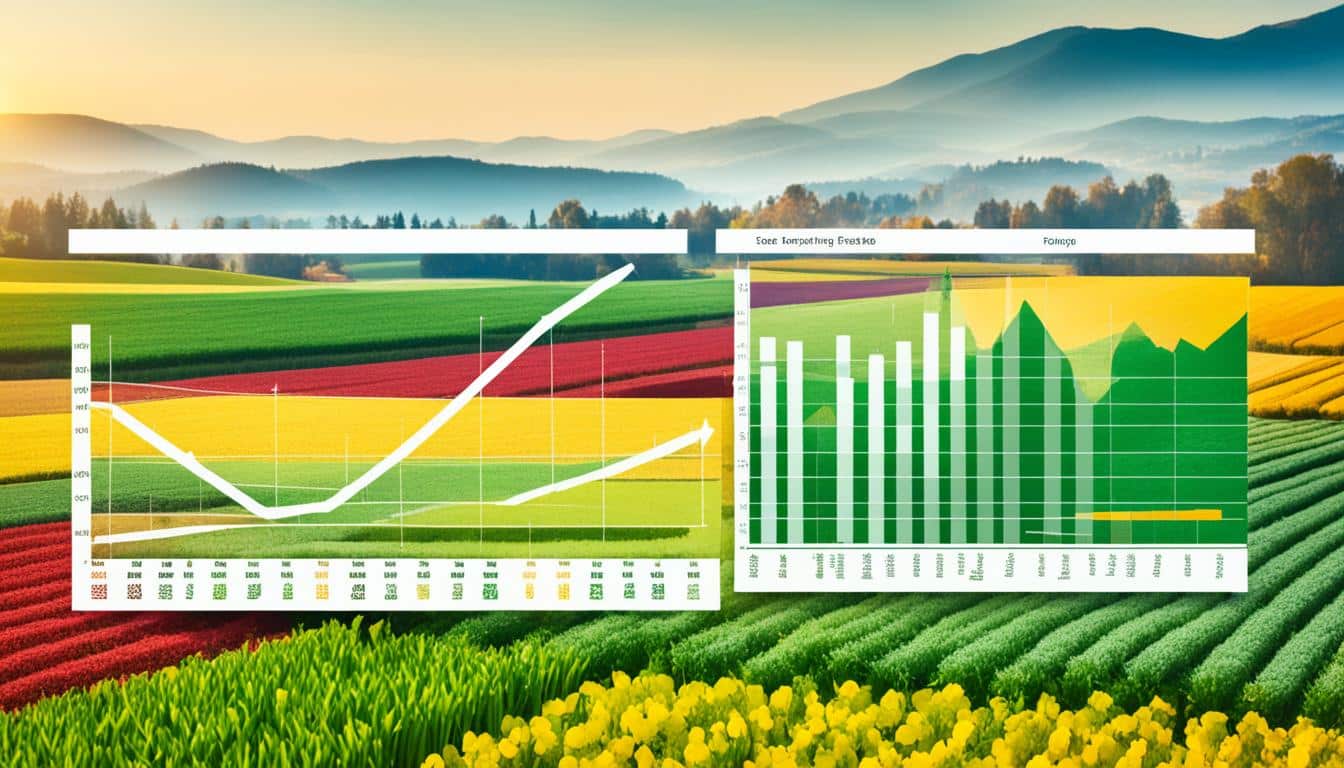
By 2050, the world could have about 9.7 billion people, 33% more than now. This puts a lot more demand on our food sources. So, it’s vital for farmers and investors to study the farming business more closely. They need to find ways to make their farming both sustainable and efficient.
Farmers worldwide are worried about the environment, use of technology, and how to implement new farming methods. Even though different places vary in how they approach these issues, they all agree that agriculture needs to evolve. Using technology, like in Brazil where AgroTools uses Google Cloud for farm analysis, can help improve how we value farm products and make the agricultural market more stable.
The Agriculture Analytics Market is set to grow by 14.40% each year until 2026. This means people are relying more on data to make smart farming decisions. Europe’s SmartRural, for example, uses the IBM Cloud to understand farming locations better. It’s important for the agriculture sector to keep up with these technological advances, aiming to be more efficient and caring about the environment.
Agricultural market analysis is key for those in farming, offering tools to check on market movements, prices of goods, how goods move, and what people want. It helps make farming more sustainable and efficient.
Market analysis in farming looks at a range of things like predicting crop prices, checking trends in rural areas, and watching the prices of goods. This helps everyone in farming, from growers to investors, know when to act. It’s all about spotting market changes early.
To really understand the market, we’ve got to keep an eye on technology changes, what people want to buy, the economy, and how policies affect farming.
| Statistical Data | Details |
|---|---|
| Credit Hours | 3 |
| Course Length | 15 weeks |
| Hours of Lecture per Week | 3 |
| Topics Covered | Agricultural price seasonality, market adjustments, price analysis using supply and demand, equilibrium displacement models, food marketing channel, international agricultural trade, agricultural futures, and options markets |
| Prerequisites | Principles of Microeconomics (ECON 103), Marketing (BSAD 203), MATH 141 Statistics |
| Goals | Ability to discuss price formation, forecast price changes, analyze supply and demand curves, use futures markets to hedge commodities |
| Textbook | Norwood, F.B. and J.L. Lusk (2008). Agricultural Marketing and Price Analysis |
| Other References | Rhodes, V., J. Dauve, and J. Parcell. (2007). The Agricultural Marketing System; Tomek, W.G. and K.L. Robinson. (2003). Agricultural Product Prices; Goodwin, J.W. (1994). Agricultural Price Analysis and Forecasting |
| Measurement Criteria/Methods | Case studies analysis, class participation, research paper, quizzes, tests, essays, exams |
Technology is changing how we look at agricultural markets. It gives farmers and investors more info on their work. It’s a key step in better agribusiness research and smarter farming market studies. Drones, sensors, and predictive tools are leading to farming with pinpoint accuracy.
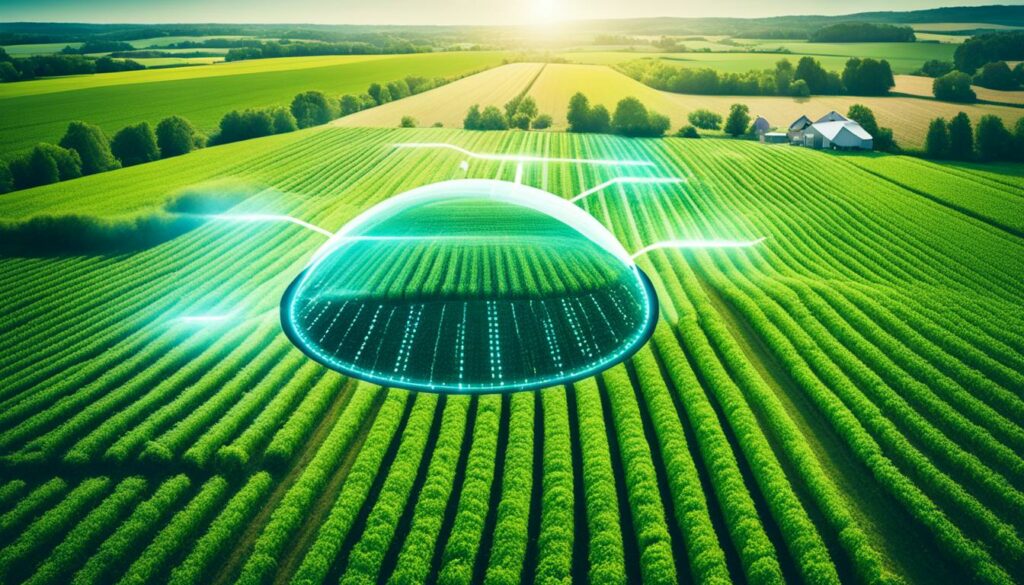
Advances in tech are sharpening our view on agricultural markets. For example, drones and sensors help manage farms better by taking detailed pictures and providing live crop health updates. These tools, along with IoT devices, are set to hit nearly 300 million farms by 2024. That’s a 50% jump from 2022, showing the big role tech plays in farming.
Data analysis tools are changing how we do farming market research by making things run smoother. Predictive tools help with better planning, like forecasting how much we’ll grow and what the weather will do. This helps us feed a larger world – there could be 9.7 billion of us by 2050. Plus, it might add over $500 billion to the economy and boost efficiency by 7 to 9% by 2030.
These tools also tackle big problems like not having enough water and land getting worse. There might be a 40% drop in water supply by 2030. But, using smart mobile irrigation can cut down water use by 30% to 50%. These methods, supported by strong farming research, help farmers fight tough environmental issues. It makes farming more sustainable.
Farm produce valuation plays a big role in today’s farming. It links with weather impacts, what people want, and how much it costs to grow. Knowing these parts well is key. It helps farmers set prices that are good for them and us.
Many things affect agricultural commodity prices. This includes how food gets to us, what it costs to make, and how much we want it. Since 2005, the part of the food dollar farmers get has gone down to 22 cents from 33 cents in the 1970s. Changes in weather can also make a big difference in what we pay for food.
Farmers selling directly, like at markets, can often make more money. This is a smart way for them to get a bigger share of the food dollar. By doing this, they also lower the risks of farming. They use traditional ways of farming, which they understand well.
There are many ways to figure out how much farm products are worth. Using costs and looking at what might happen in the market are common. For example, a strategy used for soy nuts can make them worth almost $420 more a bushel. This is even though soy nuts aren’t as widely sold as some other foods.
By combining different methods to add and find value, farmers can get more of the food dollar. They can do this by selling special food items directly to people. This helps them handle the competition and worries about costs in the food industry.
Learning new ways to value farm products rightly, and understanding agriculture industry statistics, helps farmers to stay smart in changing times. It lets them plan for the future in a way that helps their farms grow.
| Year | Farmers’ Share of Food Dollar | Market Share (Top Firms in Wet Corn Milling) |
|---|---|---|
| 1970s | 33 cents | N/A |
| 2005 | 22 cents | Over 80% |
Farmers use crop price forecasting to understand the agricultural market better. It uses past prices, what crops are growing, and how they’re traded worldwide. This helps farmers improve their farms and make more money. We’ll look at the important details, the hurdles, and the chances farmers face in predicting crop prices.
Understanding the crop price forecasting essentials is crucial. Knowing the past prices helps predict what’s next. Changes in the amount of crops, due to the weather and new technology, are key. Also, how crops move around the world affects what farmers earn.
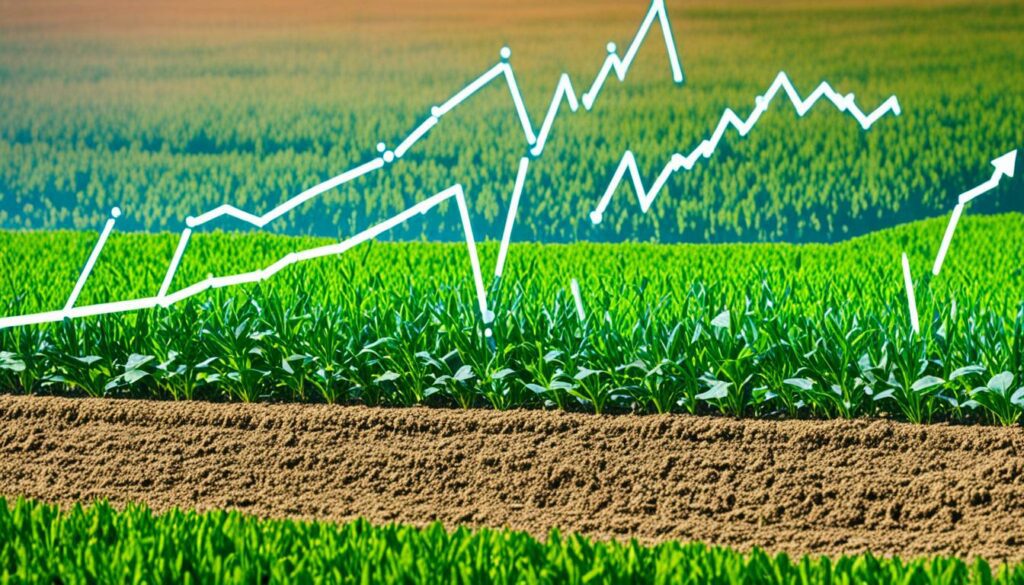
Even with its benefits, crop price forecasting has tough parts. For example, traditional ways like looking at past prices and grey models have issues. Looking at past prices can’t always predict the future. Grey models are good for the long run, but they need lots of ongoing data updates.
| Forecasting Method | Advantages | Limitations |
|---|---|---|
| Regression Analysis | Effective for short to medium-term | Struggles with seasonality and nonlinearity |
| Grey Models | Useful for long-term with limited data | Requires regular data trends |
It can be hard to make exact forecasts. Changes in the weather, new laws, and other surprises can shake things up. But, this opens the door for smarter ways to predict prices. New types of technology, like computers that learn and adapt, are getting better at this. They can handle sudden changes more easily.
Picking the right forecast method is key for farmers. It’s important to know how to value different crops. Using the best forecasting tools can really help. This is how farmers stay strong in the changing market.
Rural economy trends greatly affect farming. They show what’s happening with the economy worldwide and locally. It’s important to know how changes in the countryside influence farming, prices, and market plans.
Changes in the global economy hit rural areas and farming hard. For example, the number of people in nonmetro areas in the U.S. went up by 0.12% from 2021 to 2022. This was a change from the year before, which saw a decrease.
However, over half of these areas had fewer people. Yet a third of them grew more than the national average of 0.54% from 2020 to 2022.
In 2022, farm income reached $185.5 billion but is expected to drop to $116.1 billion by 2024, showing a 25.5% decrease. At the same time, costs for producing goods are set to increase by $16.7 billion (3.8%) to $455.1 billion in 2024. This means farmers are facing a financial squeeze.
In the U.S., how farming looks is changing due to different rural trends. Over 20 years, nonmetro areas have seen more people get an education.
For example, the number of people without a high school diploma went down by 11%, while those with a bachelor’s degree or higher went up by 6%. This education shift affects farming, too.
Farming areas that rely on making things, about 18% of the rural counties in 2017, have faced job losses. This makes farming harder. Also, more poverty in nonmetro areas (15.5% in 2022, compared to 12.1% in the cities) adds pressure on farming research and practices.
To know what’s happening, we have to look at both big global economic changes and local developments. This knowledge helps everyone in farming understand the challenges better.
Agribusiness research is key to understanding the market. It helps make important decisions. This includes looking at strengths, weaknesses, opportunities, and threats, trends in the market, and checking out the competition. These things are vital for making agribusinesses not just last but succeed.
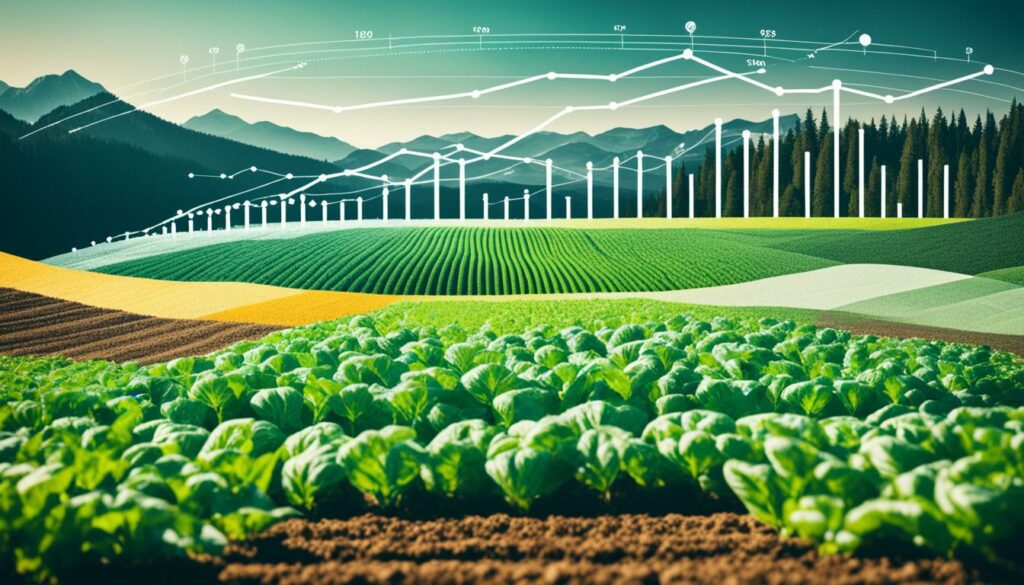
Many techniques in the market research field are very helpful for agribusiness. Using things like drones that fly can check for pests and see who needs more water. They can also help predict and plan for floods. Modern tools like these help gather correct and up-to-date information for making choices.
Agribusiness research also uses data from both old and new sources. This data really boosts our understanding of the agriculture market. It’s the backbone for predicting the market’s future and planning what to do next.
Looking at past successes is a big help in agribusiness. Case studies show what has worked well. They often show how farms around the world are being more eco-friendly and meeting new standards. This is very important as agriculture is a large part of global pollution.
Case studies also teach us about adapting to things like climate change. They show us new techniques that have made farms do better. Lessons from these real examples help others plan smarter and stay ahead, even in a tough market.
For example, farms facing new weather problems from climate change are using AI in precision farming. This shows how good research and smart plans can really improve how farms run. They become more efficient and do better overall.
Studying these stories teaches how to deal with risks and be more successful locally and globally. By using what we learn from industry statistics and market studies, farmers and investors can decide better. This way, they can use their resources smarter and improve how well they do in the market.
Studying agricultural industry stats gives deep knowledge about the market. It helps in making better decisions and guessing future trends. These numbers come from government sources, reports, and the latest data tools. This means we get a full picture of what’s happening in farming and agriculture.
Agricultural stats mainly come from big government reports, expert publications, and modern data methods. Governments offer a lot of info, while the industry gives us very detailed insights. Plus, high-tech data tools give us up-to-the-minute stats. This is key for anyone researching the farming market.
Diving into what’s happening in agriculture shows us some big changes and growth:
| Period | Agricultural Analytics Market Size (USD million) | Growth Rate (Y-O-Y %) |
|---|---|---|
| 2017 | 500 | 5% |
| 2018 | 525 | 5% |
| 2019 | 551.25 | 5% |
| 2020 | 578.8 | 5% |
| 2021 | 607.74 | 5% |
| 2022 | 638.12 | 5% |
| 2023 | 700 | 9.7% |
| 2024 | 766.79 | 9.6% |
| 2025 | 840.07 | 9.5% |
| 2026 | 920.47 | 9.6% |
| 2027 | 1008.42 | 9.5% |
| 2028 | 1102.88 | 9.4% |
Besides market size and growth, look at these other trends:
All these insights give us a well-rounded picture of where agriculture is headed. This helps those involved make smarter choices.
The livestock market outlook helps investors understand agricultural investment. It’s important to know today’s market trends and future forecasts. Different regions have various rules, so it’s crucial for investors to stay educated.
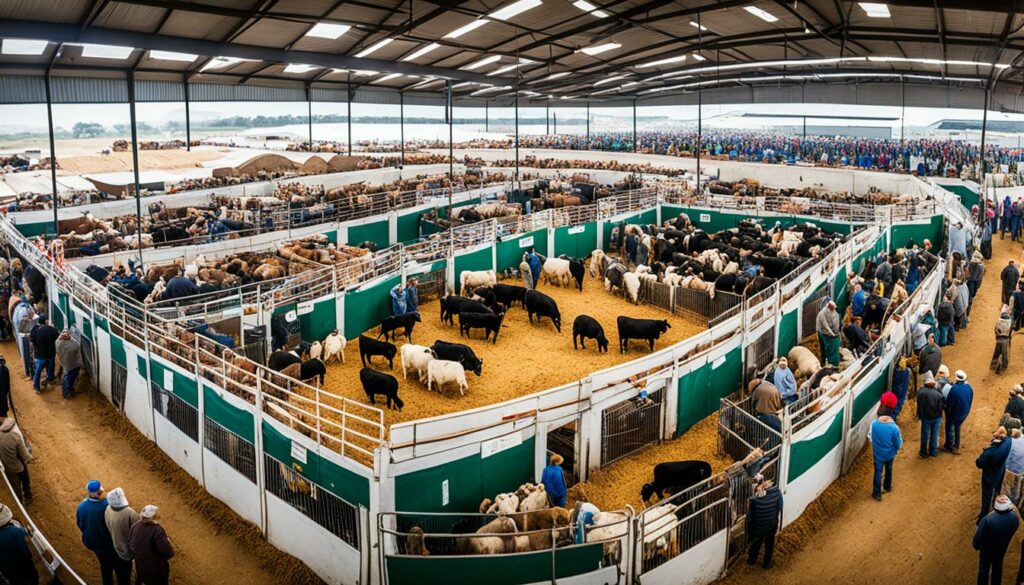
Now, agricultural commodity prices and the livestock market outlook change due to many reasons. Geopolitical tensions can lead to trade barriers, which affect the market. Also, diseases among livestock lower supply, change demand, and reduce investor trust. For example, places with African swine fever sees big effects on trading.
Looking ahead in the agriculture market analysis includes new animal farming methods and what people worldwide eat. Sustainable farming and using tech, like precision farming, are very important. These things will improve how well animals are cared for, make them more productive, and lessen harm to the environment.
It’s also key to know the rules in each region. In the United States, certain investors must follow specific laws. But in the United Kingdom, investors are seen as pros due to special rules, much like in the European Economic Area.
Below is a table of what kind of investors different regions recognise:
| Region | Investor Classification |
|---|---|
| United States | Accredited Investors and Qualified Purchasers |
| United Kingdom | Professional Investors |
| European Economic Area | Professional Investors (Markets in Financial Instruments Directive) |
| Hong Kong S.A.R. | Professional Investors (Securities and Finance Ordinance) |
| Japan | Qualified Institutional Investors or Professional Investors |
| Australia | Wholesale Clients (Corporations Act 2001) |
| Other Jurisdictions | Professional Investors or Equivalent |
Looking ahead, the livestock market is set to see new changes like better farming methods, shifts in what we eat around the world, and efforts to be more eco-friendly. This makes the market both exciting and challenging for those looking to invest.
Good farming market research helps farmers and businesses succeed. It uses both numbers and people’s thoughts to understand the market well.
Farming market research is best when it uses both numbers and stories. Numbers, like how much a farm produces, help set the right prices. Stories from farmers show what they really need and want. This mix helps make smart decisions.
Turning what we learn into real plans is very important. For farmers, this means using what they know to run their farms better. They use insights from research to improve their ads, farming methods, and to reduce risks. A detailed study helps choose what to focus on, improving their chances against others in the market.
| Component | Details |
|---|---|
| Market Opportunity | An overview of market size, sales, population, and units consumed |
| Risk Analysis | Identification of market, operational, and financial risks with mitigation strategies |
| Funding Requirements | Estimation of necessary capital and funding sources for 1-2 years |
| Competitive Strategies | Adoption of least-cost and differentiation strategies to stand out in the market |
In conclusion, doing good farming market research and using what we find is key to success in farming. This smart way of working turns research into real benefits for farms.
Agricultural commodity prices can greatly affect a farmer’s earnings. Many things can influence the prices. These include supply issues, policy changes, and global economic changes. Between January 2002 and June 2008, the price of internationally traded food rose by 130 percent. Maize prices almost tripled, wheat prices increased by 127 percent, and rice prices jumped by 170 percent in that period. Such big changes in prices make it hard for farmers to plan financially.

The prices of agricultural goods are complex and influenced by many factors. For instance, the value of the U.S. dollar fell by 35 percent against the euro from 2002 to 2008. This contributed to about 15 percent of the increase in prices. The cost of oil plays a big role too. It has tripled in the last two years. With every 1 percent increase in oil prices, grain prices go up by 0.18 percent, leading to a 36 percent average increase.
It’s also important to look at global market trends. From 2000 to 2007, not all types of grains were in high demand. Wheat and rice use grew by less than 1 percent each year. However, maize use increased by 2.1 percent annually. Also, the market saw a 1.3 percent rise in grain feed consumption each year. The production of grains changed a lot too. In 2006, it fell by 1.3 percent, but in 2007, it grew by 4.7 percent. All these changes create an unstable market for farmers.
There are several strategies farmers can use to lessen the impact of volatile prices. One is diversification. This means growing different types of crops and raising various animals. It spreads the risk and ensures a steadier income. Another method is using futures contracts. This lets farmers fix their produce prices beforehand, reducing the effects of price changes.
Creating cooperatives is also helpful. It strengthens the bargaining power of farmers. They can get better prices, reach more customers, and share resources and knowledge. Market analysis is crucial too. This helps farmers stay up-to-date with the latest trends and predict price changes. It allows them to make smarter financial decisions.
| Year | Maize Prices (%) | Wheat Prices (%) | Rice Prices (%) | Palm Oil Prices (%) |
|---|---|---|---|---|
| 2005-2008 | +200% | +127% | +170% | +200% |
The agricultural market varies a lot by region. This is because of differences in climate, land policies, and how much new technology is used. Each place has its own special opportunities and issues. These things affect what the agricultural market looks like there.
In North America, using technology is changing the market a lot. The Midwest grows the most crops and makes 42.8 percent of the U.S.’s farm products. Farms there are getting bigger, with the average size growing by one acre in 2019. This shows a move towards farming on a larger scale. Also, most farmers there own their land, and many farms are run by just one person.
Looking at the Southeast, it has over 18 percent of the land but saw fewer farms from 2018 to 2019, about 5,800 less. This decrease shows farms are coming together or getting bigger. What’s interesting is that three-quarters of farms are fully owned there. The West, on the other hand, has a lot of workers who aren’t the farm owners, including migrants. It also has valuable crop land but not a lot of land for animals to graze.
Europe is all about farming in a way that doesn’t harm the environment. Northeast U.S. proves that by focusing on sustainable practices even with less land to farm. In Europe, a high investment rate shows there’s a lot of interest in farming’s future.
Over in the Asia-Pacific, smart farming is catching on fast. This is because there are more and more people to feed. Big countries China and India are making more money each year. They spend a lot on making farming smarter. Vietnam and Indonesia are also doing well. They’re putting more money into farming research.
| Region | Primary Operators | Average Farm Size | Percentage of Full Owners |
|---|---|---|---|
| Midwest | 36% | Increased by 1 acre in 2019 | 51.4% |
| Southeast | 20% | Varied trends | 74.6% |
| Northeast | 12% | Least acres operated | 65% |
| West | 15% | Highest number of hired workers | 70% |
It’s key to understand these regional differences fully. By looking at rural economies and recent farming research, we can make better decisions. This helps us use each region’s strengths smartly.
The agricultural sector is facing more and more challenges. These issues make it hard to keep up or get better in productivity. Two major problems are climate change and supply chain issues. They need smart solutions and fresh ideas to manage.
Climate change hits agricultural work hard. It brings unpredictable weather that can harm crop growth. The world is seeing odd patterns in rainfall and temperature, and more extreme weather events.
With only 12% of land farmable, it’s vital to use every bit well. Agriculture and similar activities cause 23% of greenhouse gas emissions. These gases worsen the climate. We need to look at the farm market closely to make farming stronger against such challenges.
The agricultural market also struggles with supply chain problems. These issues get worse because of political fights and world health crises. It’s costly to move agricultural products in many developing places.
Small farmers have a tough time because they can’t easily get money or supplies. This leads to much less crop than possible. They also face the problem of losing a lot of their crops after harvest because of bad storage.
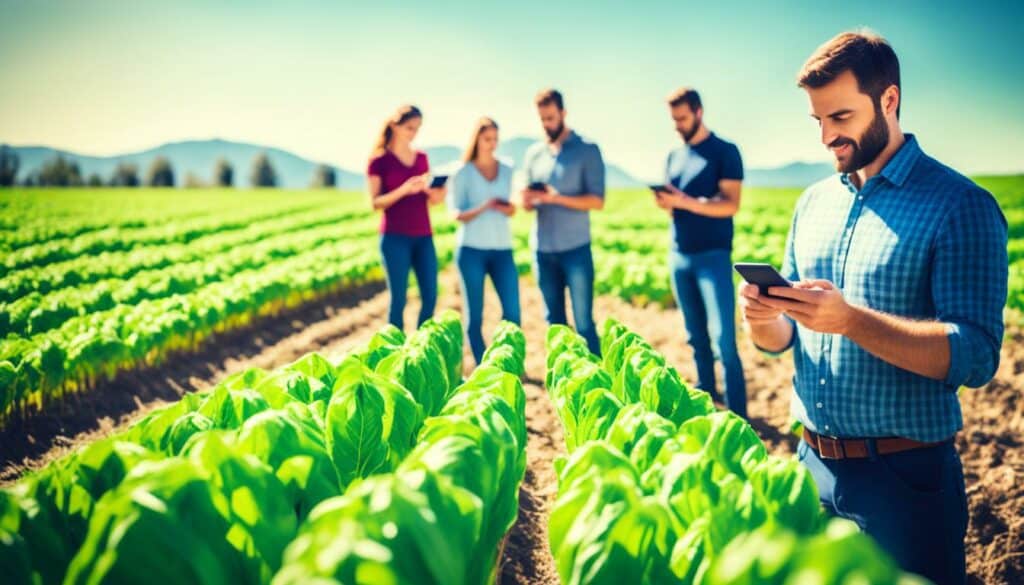
By 2050, the world will need 70% more food, but these conditions make it hard to increase production. Small farmers are vital in this. They produce 80% of the food in the developing world. Yet, they work with little resources. Finding new ways in farm research is key. It can help make things smoother, strengthen connections, and make the farm sector more dependable.
| Region | Average Crop Yield | Key Challenges |
|---|---|---|
| North America | 700% higher than Sub-Saharan Africa | Market saturation, environmental regulations |
| Sub-Saharan Africa | Substantially lower yields | Limited access to investment, poor storage facilities |
So, working on agricultural prices and better farm research is vital. This helps farmers deal with tough situations. It makes it possible for them to push through challenges effectively.
The U.S. economy relies heavily on agriculture. This sector, along with food and related businesses, brought in $1.530 trillion in 2023. This was 5.6% of the country’s economic output. It shows the big chances for growth by using new technologies and being more green.
New tech in farming is very exciting. Things like AI, remote sensing, and precise farming methods can make things more efficient. For example, the food and drink making industry helped create 1.7 million jobs in 2021.
Precision farming, with its drones and smart sensors, help farmers do better. By using these technologies, farms helped bring in $203.5 billion to the U.S. economy in 2023.
Sustainable farms are a key part of the future. People all over the world want food made with care and in a way that looks after the environment. Projects in places like Ethiopia are already making a big difference, helping lots of small farmers.
About 2.6 million jobs in 2022 came straight from farms. To keep these and help the planet, farms need to work in a way that lasts. This not only keeps up with what people want but also makes sure we can feed the world in the future.
This analysis tool is key for those in farming. It looks at market changes, prices, and what consumers want. It helps make farming more sustainable and efficient.
It looks at tech advances, what people need, the economy, and farming policies.
Technology, like drones, is changing how we look at data in farming. It helps with crop growth and knowing the weather.
Many things affect how much farm produce is worth, like the weather. Pricing methods look at costs and what the market needs.
Forecasting uses past prices, how much we produce, and trade abroad. These help farmers make smart market choices.
Sometimes, it’s hard to predict prices due to unexpected events. Yet, new tech can make forecasting better, helping farms grow.
Farming connects to big and small economy changes. Global shifts need local farm attention to stay successful.
Research shows what the market is like, who the competitors are, and the latest trends. This helps farmers make good business choices.
Stats come from the government, industry books, and hi-tech data gathering. Looking at these stats shows when to plant and sell crops.
The livestock market is up and down, impacted by many factors. New farming methods and eco-friendly practices are key for its future health.
It’s about looking at numbers and talking to farmers. Turning this info into useful strategies is what makes farms succeed.
Diversifying, using futures, or working with others can help farms handle price changes better.
Markets change by region due to the land, policies, and tech. Each place focuses on different ways to grow, like using new technology.
The industry faces tough times with climate issues and global events affecting crops and trade. But, it’s also a time for farms to grow stronger and more innovative.
With new tech and green practices, farming can become better for the earth. These changes promote growth while caring for our planet.